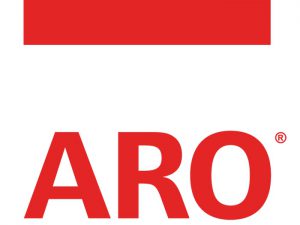
Piston wash pumps keep maritime ships operating smoothly
One of the drivers of operational costs in the marine industry is the time taken to prepare ships, load and unload cargo, and clean ships for new cargo in between each voyage.

One of the drivers of operational costs in the marine industry is the time taken to prepare ships, load and unload cargo, and clean ships for new cargo in between each voyage.
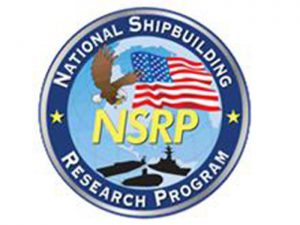
OCTOBER 5, 2016 — The Executive Control Board of the National Shipbuilding Research Program (NSRP) has selected 17 panel projects for funding awards, as part of the program’s continuing mission to reduce
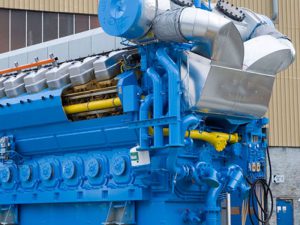
JUNE 3, 2015 — Rolls-Royce engines powered solely by liquefied natural gas (LNG) have completed 25 million hours of operation on land and at sea, since their introduction in 1991. More than
JUNE 4, 2013 — Impending new legislation to protect the environment potentially presents shipping with an additional industry-wide cost of more than half a trillion US dollars between 2015 and 2025. This
SEPTEMBER 26, 2012 —International accountant and shipping consultant Moore Stephens says total annual operating costs in the shipping industry increased by an average 2.1 percent in 2011. This compares with a 2.2
Vessel operating costs are expected to rise by 3.2 percent this year and by 3.5 percent in 2011, Crew costs are the category most likely to produce the highest levels of increase.
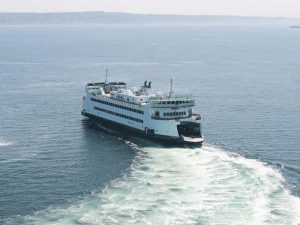
“Legally, a ferry is the continuation or prolongation of a highway over a navigable stream.” This quote is from the first Transactions of the Society of Naval Architects and Marine Engineers (SNAME), published in 1893. Given the impact of ferries upon society, it should come as no surprise that they have been a topic of interest to many naval architects for many years. The Pacific Northwest region of the United States contains a mix of islands, rivers, peninsulas and lakes. Salt water and fresh water transportation routes have been a critical part of the economic development of the region beginning with the native peoples and continuing today. Since the arrival of the first settlers in the 1850’s, power-driven ferries have been a common sight, linking the various communities through the movement of goods and people.
What is a double-ended ferry and why choose this configuration? A double-ended ferry is one where vehicles are loaded on and off both ends of the vessel and the direction of travel switches so the bow becomes the stern. The greatest argument for a double-ended ferry is when the route is short such as a river crossing. The time to maneuver the vessel so it can back in to the dock becomes a significant portion of the overall time between departures. The maneuvering time also consumes additional fuel and imposes the risk, however small, of any maneuver going awry. Another advantage is that the vessel will have the same handling characteristics every time it enters or departs a terminal. With its propulsion at each end, the double-ended ferry has excellent stopping power and superior maneuverability, especially if using an azimuthing or cycloidal propulsion system. This all contributes to safety, a critical factor for any ferry.
The origins of Elliott Bay Design Group (EBDG) go back to the late 1920’s with the establishment of W.C. Nickum & Sons. The earliest ferry projects were to modify the double-ended ferries from the San Francisco Bay area that were made superfluous by the bridge building activities there in the 1930s. Since that time EBDG has worked on a wide variety of vessel sizes and propulsion types, to suit routes ranging from short river crossings to 20 nautical mile transits of exposed water.

The typical ferry we have designed has a V hull amidships with a narrow, flat of bottom at baseline. The side shell flares outboard with one or two knuckles between the heavy guard at the deck edge and the bottom. This configuration produces surfaces that are fully developable which facilitates construction. Typically, the waterline beam is 80% of the maximum beam. This shape provides excellent reserve buoyancy for damage stability and adds waterplane area as the vessel heels, thus improving intact stability. Where there is a draft limit, we increase the width of the flat of bottom. At the ends the waterline shape typically narrows to a fine entrance. Because the waterline beam decreases more quickly than the beam at deck, the effect is to create substantial sponsons. These are located sufficiently far above the bow wave to avoid increased wetted surface as the bow wave increases with speed. The shape of these sponsons also needs to consider wave slamming in rough weather, so a compromise is sometimes required between calm water resistance and speed in waves. The lower part of the hull at the ends is fitted with a skeg to support the shaftline (with traditional shafting on centerline) and to support the hull in dry dock. The skeg shape and volume are critical to the shape of the bow wave, hence we carefully consider the section area shape, including skegs. In more recent projects we have seen greater emphasis on reducing hull resistance, especially for ferries that operate on route lengths of greater than 2 nautical miles. Over the 40 to 50 year life of a ferry, small reductions in drag can result in significant fuel savings, and of increasing importance, lower emissions. Through the use of computational fluid dynamics we can find a balance between low resistance and ease of construction.
The double-ended ferry lends itself to a wide variety of propulsion configurations. Historically, these have ranged from steam-driven, side paddlewheels to a cable ferry powered by horses on a treadmill. In more recent times, we have seen the diesel engine become the dominant power source with a variety of means of putting the power into the water. Clearly, there is no preferred approach that works for every ferry. As designers, we look for the machinery configuration that meets the owner’s performance requirements with the best balance between reliability, maintainability, fuel efficiency and operability. This search typically takes the form of a propulsion study where we work with the owner to establish weighting criteria for the various aspects of the propulsion system. Typically, an owner will have strong opinions on what equipment and what configuration works well for his operation.
We are also seeing more clients interested in different forms of propulsion to reduce their overall energy consumption and thus reduce their environmental footprint. Owners are willing to trade off the simplicity and reliability of traditional geared diesel propulsion for reduced energy consumption through use of hybrid propulsion with electric drives, batteries for energy storage, and smart control systems. We are also seeing increased interest in alternative fuels such as liquefied natural gas, biofuels, and even hydrogen.
This year EBDG developed a physics-based simulation tool to evaluate different propulsion technologies for different sizes of ferries operating on different types of routes. This tool calculates hull resistance, weights, fuel requirements, and hull characteristics in an iterative fashion until the basic parameters of weight and buoyancy are in balance. The outputs from the tool are estimates of capital and operating costs as well as carbon emissions. We can now work with ferry operators to assess the economics of using technology to reduce environmental impacts.
So, what has 50 years taught us? First is that there always will be opportunities to improve the art of double-ended ferry design. Some recent trends include:
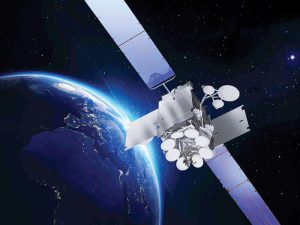
High profile customers and technology partners are swiftly committing to shipping’s new era of connectivity through a series of agreements to use the world’s first global maritime high-speed broadband service from a single network operator. Officially launched on March 30, Inmarsat Maritime’s revolutionary Fleet Xpress has unleashed the power of ‘big data’ to enhance vessel efficiency, while delivering transformational but cost-controlled connectivity to the maritime industry..
Fleet Xpress delivers high-speed data transmission with unmatched reliability, switching automatically between Ka-band and Inmarsat FleetBroadband L-band services to ensure constant coverage.
“Fleet Xpress alters the asset management capabilities and frontline working experience of an entire industry,” says Inmarsat Maritime President, Ronald Spithout. “It will optimize vessel safety, security and efficiency, and meet the connectivity needs of the modern seafarer that have for too long been overlooked.”
Separate agreements announced in June with VSAT service providers Marlink and SpeedCast International suggest that leading maritime value added service providers agree. Both organisations already describe Fleet Xpress as key to their maritime services portfolios. SpeedCast says the service is fully integrated within its SIGMA gateway, while Marlink emphasises access to a range of options that include its XChange communication management platform, with ‘Bring Your Own Device’ crew connectivity.
SpeedCast and Marlink have committed to roll out Fleet Xpress to approximately 2,000 vessels apiece over the next five years.
Market migration
Direct agreements with shipowners also quickly followed the Fleet Xpress service launch. Early contracts were announced covering installations on 70 Nanjing Tanker Corporation ships.
However, the appeal of Fleet Xpress is not limited to the cargo-carrying ship sector. Even before its commercial launch, trials on the ice-class adventure ship Ocean Nova in Antarctica delivered the low-horizon satellite views through heavy cloud cover and precipitation that operators routinely face in such hostile waters. So satisfactory were the trials that owner Nova Cruising Ltd committed to the commercial installation of Fleet Xpress.
“Fleet Xpress delivered on its promise of high-speed seamless mobile broadband in one of the world’s most difficult areas for most satellite systems,” says Dr Luis Soltero, Chief Technology Officer of project partner Global Marine Networks.
In early June, Inmarsat announced a first commitment to Fleet Xpress from a superyacht owner, for the 44m sail yacht Juliet at Royal Huisman Shipyard, the Netherlands. The project involved installation of a new Sailor 100GX VSAT system and the Inmarsat GX bespoke below deck equipment configuration.
Gerbrand Schalkwijk, Chief Sales Officer, Inmarsat Maritime, says the maritime package has been eagerly anticipated by an industry seeking to take advantage of high-speed Ka-band with ultra-reliable FleetBroadband L-band service acting as unlimited backup. “We expect up to 1,000 ships will be using Fleet Xpress before the end of 2016,” he says.
For the first time, he explains, ship/shore connectivity is so reliable that service agreements can include network availability guarantees, with minimum and maximum of data throughput “so that customers know in advance what they are paying for”. Fleet Xpress also brings ‘Inmarsat Gateway’ access, which “effectively connects ships to landside offices via VPN”, opening up a new world of content-rich applications for shipping.
Enabling change
For its part, Inmarsat Maritime is cultivating the ‘service ecosystem’ for smarter shipping. It has approved new generation antenna systems from Cobham, JRC, and Intellian to meet requirements, but also devised the Certified Application Partner (CAP) programme to encourage the development of software and hardware that is compatible with Fleet Xpress.
The CAP programme offers a framework for maritime big data to drive smarter shipping. It looks beyond more timely updates of more data, better voyage planning, remote monitoring/ diagnostics, and better repair scheduling, to more imaginative applications: telemedicine; video conferencing; and video surveillance, to name but three. An Inmarsat Developer Conference, held in London earlier this year to hear presentations from existing and potential CAP partners was heavily oversubscribed.
At the industry’s leading edge of technology, Inmarsat is also a partner in the Advanced Autonomous Waterborne Applications Initiative (AAWA), led by Rolls-Royce. Funded by the Finnish research institute Tekes, the €6.6 million project runs until 2017. “Fleet Xpress delivers the vital ship-to-shore communications required to support the remote control functionality fundamental to the realisation of the autonomous ship,” says Inmarsat Maritime President Spithout.
Whatever the outcomes of this radical scheme, Inmarsat expects it to yield tangible progress for data transfer ship-ship and ship-shore, with significant consequences for the way ships are managed and worked at sea.
Life at sea transformed
In the more immediate term, ship crews working today will be among those feeling the most significant transformation due to Fleet Xpress. The seafaring life still consists of extended periods of working under pressure, punctuated by opportunities for intense boredom. It also continues to involve long periods of separation from family, friends and the world at large, adding up to a burden of isolation.
This is despite the fact that, according that the Maritime Labour Convention: ‘Every seafarer should have reasonable access to ship-to-shore telephone communications, email and Internet facilities, where available, with any charges for the use of these services being reasonable in amount.’
Drew Brandy, Senior-Vice President, Inmarsat Maritime points out that 73% of seafarers take into account ship-shore connectivity when deciding which ship to join, according to the 2015 Crew Connectivity Survey from Futurenautics. The same survey reports seafarers on average bringing three communication devices onboard ship, with 77% now carrying a Smartphone.
Meeting seafarer expectations of access to VOIP and Video Chat services will be a key plus point for Fleet Xpress bandwidth because owners will be able to do so without compromising their operating costs. The migration of existing customers from XpressLink Ku-band services to the Ka-band based Fleet Xpress will “double the bandwidth available at no additional cost,” according to Brandy.
Critical momentum
If emerging crew attitudes are a spur and global end-user agreements suggest shipping is easing into the Ka-band era, the recent appointment of Satlink Satellite Communications as a further Inmarsat partner may also be telling. Satlink, whose Satbox and Tracklite service will become integrated as ‘value added’ features of Fleet Xpress, is the largest single XpressLink provider for Inmarsat globally. Its customer base includes MSC Shipmanagement Limited and Columbia Shipmanagement Ltd.
Inmarsat Maritime has separately disclosed intentions to transition more than 2,600 existing XpressLink installations and convert its committed XpressLink backlog to Fleet Xpress over the next three years.
Maritime President Spithout believes the opportunity for an industry transition is now ripe. “We are already committed to future service enhancements by contracting Airbus to build the first two satellites for our sixth-generation I-6 fleet. But the partnerships we have put in place for Fleet Xpress and our engagements on hardware, software, service and distribution mean that the tipping point for maritime communications as a whole is 2016, not at some time in the future.”
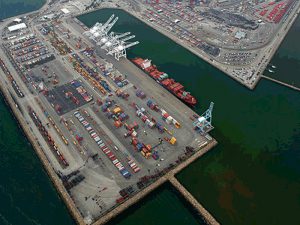
Sitting side by side, the Ports of Long Beach and Los Angeles form the San Pedro Bay Port Complex at the point where the mouth of the Los Angeles River completes its 50-mile course to the Pacific Ocean. Though operating independently, together the two facilities make up the largest port complex in the United States and are responsible for more than 40 percent of the nation’s containerized cargo shipments.
With an eye to the future, the Port of Long Beach is currently involved in a massive, 10-year capital investment program that will cost more than $4.5 billion. According to Randy Parsons, director of security for the Port of Long Beach, “This will enhance our position of being big ship ready. We will be able to provide docking services to ships that can carry cargo up to 21,300 TEU [20-foot equivalent units]. With increasing competition and the growing size of the container ships that are transporting cargo, our expansion program is designed to sustain us as a leader in the industry for the foreseeable future.”
Implementing the Virtual Port
Occupying more than 3,200 acres (13 km2) of land with 25 miles (40 km) of waterfront, the Port of Long Beach poses a major challenge for security operations, particularly since it is an open port that provides docking services to pleasure and small business craft and commercial cargo ships. In addition, more than 15,000 trucks and 100 trains move in and out of the port every day. The dynamic nature of the port, with its constant movement and 24-hour operations, requires close surveillance. Like many ports, Long Beach maintains a multilayered physical security system that includes closed-circuit television surveillance, helicopter downlinks, radar tracking, sonar and other sensor-based systems. About six years ago, Esri ArcGIS was added to help visualize security operations, and the advantages of making GIS central to the port’s joint command and control center were quickly realized.
In 2011, the Port of Long Beach began the development of the Virtual Port application. “Virtual Port is a dynamic, ArcGIS [software]-based system that is fundamental to our security operations,” says Parsons. “It is the essential technology of our command center and has allowed us to geospatially enable our entire security operation. So we now have more than 60 geographically referenced databases that are integrated with the existing elements of our physical security system, which increases exponentially our ability to monitor and analyze our daily operations.”
Additionally, Virtual Port is used for two other primary functions: incident response and business recovery. “The beauty of Virtual Port is that we are using the same ArcGIS platform with the same databases for all three of our main functions,” says Parsons. “This means that our security systems operators have complete familiarity with the system and don’t have to switch over to something else in the event of an emergency.”
A major aspect of business recovery is to get the port operational again as quickly as possible after an incident. Virtual Port can help officials determine which areas of the port are inoperable, what remains open, and what resources are available to quickly resume port operations.
Applying the ArcGIS Platform to Port Security
Virtual Port’s GIS software stack makes full use of the ArcGIS platform. ArcGIS for Server is used to store data layers, services, and feeds within the port’s physical server environment, while Portal for ArcGIS creates, manages, and shares web maps through Virtual Port. This application was built with Esri ArcGIS API for JavaScript and allows users to access Virtual Port from many different environments and devices. Since it is a web app, users do not have to install any native applications or plug-ins to access Virtual Port. Each user is given credentials and a physical or soft token for a two-step authentication. Other software includes ArcGIS GeoEvent Extension for Server, which is used to display dynamic services and feeds, such as asset or automatic identification system vessel tracking. Rule-based alerts are built into GeoEvent Extension and provide instant notifications to port personnel when certain conditions occur, such as a vessel coming within the designated radius of a restricted area. Collector for ArcGIS and Operations Dashboard for ArcGIS are used in Virtual Port to support in-field data collection and situational awareness.
Interagency Collaboration and an Increasing ROI
Partner agencies can connect to Virtual Port and access its common operational picture to collaborate and share information to ensure the resiliency of the facility. Port officials can also run what-if scenarios that model chemical plumes and other hazards to help agencies prepare for and better understand the impact of potentially dangerous situations.
Virtual Port functions as a bidirectional, open-source clearinghouse for the agencies that partner with the security division of the Port of Long Beach. That is, partner agencies have access to the included data, but they are also encouraged to add their own data to the system. About 12 different law enforcement agencies station personnel at the port, and they are allowed access to Virtual Port. To manage the many users, multiple security levels have been implemented. A variety of federal, state, and local public service agencies use some aspect of Virtual Port for their operations. The port also partners with agencies in the surrounding area including the City of Long Beach Emergency Communications and Operations Center, local police and fire departments, and some of the local health agencies.
Though not all ports are the size of the Port of Long Beach or command the resources to implement a GIS-based security system as comprehensive as Virtual Port, Parsons indicates that the system is scalable for different-sized operations. And it can be applied to ports with different cargo operations, such as shipments of break bulk cargo or liquid natural gas. A real win, however, is the recently discovered return on investment (ROI).
“While Virtual Port provides us with a clear operational picture of our extensive day-to-day security activities, we have found that it is also helping lower our business operating costs by streamlining those processes,” concludes Parsons. “This is a huge benefit to centralizing our security operations around ArcGIS because it provides us with an increasing return on investment.”
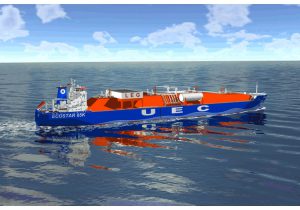
Tucked away in southwestern Finland is Salo, a town of about 50,000, where 40 percent of all the doors for large cruise ships are produced. Antti Marine’s production facility in Salo has produced a quarter of a million doors for 300 cruise ships in just over 20 years. It takes about 10 weeks to produce a typical order of 3,000 doors. They are supplied over a period of six months, as and when the ship’s cabins are built
“We are devoted to lean thinking,” says Commercial Director Markko Takkinen. “The production time of the doors is short, as we do not want them remain in storage here.”
Antti Marine specializes in what it calls ‘“tailored mass production”—necessary because on one cruise ship there may be 150 different types of doors.
Antti Marine is not the only Finnish marine company that benefits from many of the world’s large cruise ship fleet being built in Finland.
Cruise ships also have a lot of toilets and a need for a lot of waste management systems. Finnish headquartered Evac Group has just received its biggest cruise vessel contract ever: total waste management systems for four large cruise ships plus an option to outfit an additional six vessels. The initial four-vessel contract is valued at about EURO 30 million.
Each ship will have an Evac Cleansea wastewater treatment plan, allowing operation in Environmentally Sensitive Sea Areas (ESSAs) and Special Areas (SAs), dry and wet waste treatment systems, a bio sludge treatment unit, plus vacuum collecting systems and some 3,000 vacuum toilets.
Evac also supplies its products to a wide range of users ashore and afloat. So, too, does fire protection specialist Marioff Corporation Oy, but its roots are in the marine market and it last year launched a new generation Hi-Fog 3000 sprinkler series for marine applications that replaces earlier Hi-Fog 1000 and Hi-Fog 2000 sprinkler series.
“With the launch of this new generation of Hi-Fog 3000 sprinklers, we are offering to our marine customers enhanced Hi-Fog systems with faster activation, more efficient suppression and improved passenger and crew safety,” says John Hemgård, Director of Marine Business, Marioff Corporation Oy.
The Hi-Fog 3000 sprinkler series is designed, tested and type approved according to IMO Res.A800(19) as amended in IMO Res.MSC.265(84).
Another Finnish product that really took off after its widespread adoption is ABB’s Azipod. It’s become the propulsor of choice for cruise ships and ABB is currently delivering the complete electrical power plant and propulsion systems for two new 3,300 passenger cruise ships building at Germany’s Meyer Werft. The 20.5 MW Azipod XO propulsion unit for the first of the ships recently left the ABB factory in Helsinki.
ABB has delivered, or has on order, Azipod propulsion units for about 200 vessels
Each Azipod propulsion unit takes about two months for technicians to assemble at ABB’s Vuosaari plant. Across town at ABB’s Helsinki motors, generators and drives factory, the powerful synchronous motors at the system’s core take shape over six months.
COOPERATION AMONG STAKEHOLDERS
The major driver for marine engine designers is bringing engines into compliance with emissions requirements while keeping fuel consumption and maintenance costs under control.
A new pressurized EGR (exhaust gas recovery) economizer from Alfa Laval shows how Scandinavian maritime innovation often results from a cooperation between suppliers, university departments and shipowners. It also illustrates that, for some ships, EGR may be a better means of coming into compliance with new NOx limits than the better known SCR (selective catalytic reduction).
In a project supported by the Danish Energy-Technological Development and Demonstration Program (EUDP) and developed in cooperation with Aalborg University, the EGR economizer has been rigorously tested aboard the containership Maersk Cardiff.
“As a front-runner in the pursuit of green technologies, we were keen to see what the Aalborg EGR-HPE could do,” says Ole Christensen, Senior Machinery Specialist at A.P. Moller-Maersk. “But while we were enthusiastic about the boiler’s potential, we were also somewhat uncertain as how it would handle the physical realities of EGR. The temperatures are twice as high as those of traditional waste heat recovery, and the gas pressures are far greater.”
Those concerns disappeared when the boiler was brought online with the Maersk Cardiff’s two-stroke MAN B&W 6S80ME-C9 engine in November 2014. “Not only did the boiler survive,” says Christensen, “[but also] the results we have seen during testing are very promising.”
“EGR provides Tier III NOx compliance with a very compact footprint, but compliance itself is only part of the full potential,” says John Pedersen, Business Manager, Boilers, Combustion & Heaters at Alfa Laval. “Working closely with MAN Diesel & Turbo to optimize the EGR technology, we saw additional opportunities through our expertise in marine boilers.”
In the EGR process, around 30% of the exhaust gas is directed back into the engine, which reduces the combustion temperature and thus the production of NOx. Since only the remaining 70% of the gas reaches the traditional exhaust gas boiler after the turbocharger, waste heat recovery is reduced by 30% as well.
The Aalborg EGR-HPE is a revolutionary new economizer enclosed in a pressure casing that is placed in-line ahead of the pre-scrubber sprayers in the EGR circuit.
“By moving the break point for waste heat recovery from a medium engine load down to a low load, the Aalborg EGR-HPE enables even slower steaming,” says Pedersen. “That means fuel savings that quickly pay back the economizer, offset the EGR investment and lower CO2 emissions on top of the NOx reduction.”
 Positioned ahead of the pre-scrubber spray jets, the Aalborg EGR-HPE has access to much higher temperatures than traditional exhaust gas boilers. It is integrated with the conventional waste heat recovery after the turbocharger by its steam drum, which is shared with the traditional exhaust gas boiler. With the output of the traditional economizer feeding into the shared drum, the Aalborg EGR-HPE produces extremely high-quality steam with a temperature of just above 400°C, bringing the waste heat recovery system to a much higher level of efficiency.
Positioned ahead of the pre-scrubber spray jets, the Aalborg EGR-HPE has access to much higher temperatures than traditional exhaust gas boilers. It is integrated with the conventional waste heat recovery after the turbocharger by its steam drum, which is shared with the traditional exhaust gas boiler. With the output of the traditional economizer feeding into the shared drum, the Aalborg EGR-HPE produces extremely high-quality steam with a temperature of just above 400°C, bringing the waste heat recovery system to a much higher level of efficiency.
Using the Aalborg EGR-HPE in an integrated system allows waste heat recovery to occur at lower main engine loads than possible with a traditional waste heat recovery system in Tier III operation. This creates the possibility of even slower steaming.
“The EGR economizer makes waste heat recovery beneficial at far lower engine loads, down to around 30%” says Pedersen. “This means that vessels can steam even slower, with huge fuel savings as a result.”
DUAL FUEL
B&W in MAN-B&W stands for Burmeister & Wain and the Burmeister & Wain shipyard in Copenhagen built the Selandia, the world’s first successful diesel-powered oceangoing ship. That was in 1912.
More than a century later MAN Diesel & Turbo in Copenhagen is still on the cutting edge of diesel innovation.
One beneficiary of this is TOTE Maritime which opted for MAN Diesel & Turbo dual fuel technology for its two new Marlin Class, Jones Act containerships. Both of these ships have been delivered for operation between the U.S. and Puerto Rico, burning LNG as fuel and thereby meeting all U.S. SECA emissions requirement. Each is powered by the world’s first dual-fuel slow-speed engine, an MAN-B&W 8L70ME-GI, built in Korea by licensee Doosan Engine.
The technology in the ME-GI engines wasn’t just pulled out of a hat. It is a natural development of the MAN B&W low speed electronically controlled ME family of engines. The first testing of the GI principles was carried out in 1987 and MAN Diesel
& Turbo introduced its first two-stroke ME-GI dual fuel engine series in 2011, adding the ME-LGI engine series (which can burn liquid fuels such as methanol and ethanol) in 2013.
In theory, any ME engine can be converted into an ME-GI engine, but to be recognized by a classification society as “LNG ready” an ME engine equipped newbuild will have to be designed with provision for such things as the necessary LNG fuel tanks, piping and other ancillaries.
MEDIUM SPEEDS, TOO
LNG fueling has also proved an attraction for many operators of vessels with medium speed diesels who have to operate in emissions control area.
That trend sees Wärtsilä set to deliver the 100th Wärtsilä 34DF dual-fuel marine engine from the factory in early 2016. It is part of an order for three new large escort tugs under construction for Norwegian operator Østensjø Rederi by Spanish shipbuilder Astilleros Gondan. The tugs will operate at Statoil’s Melkøya terminal near Hammerfest in Norway.
“These 100 engines do not include those delivered for land-based energy generation applications,” says Lars Anderson, Vice President, Wärtsilä Marine Solutions.
“Within its power range, the Wärtsilä 34DF has become the workhorse of the marine industry, thanks to its superior reliability and lower operating costs. It is a highly efficient engine that is also making a notable contribution to environmental compliance,”
The Wärtsilä 34DF dual-fuel engine was upgraded in 2013 with a higher MCR (maximum continuous rating) and better efficiency than its earlier version, the first of which was delivered in 2010. The upgraded version has a power output range from 3,000 to 10,000 kW at 500 kW per cylinder.
ELIMINATE THE ENGINE?
Of course, if you can eliminate the engine and switch to battery power, that gets rid of emissions issues entirely. One area where this could be possible is in certain short range ferry operations and we have already noted the E-ferry way project under way in Denmark at Søby Værft AS.
 Wärtsilä, too, is eyeing this niche. In January it launched a concept for a series of zero or low emission shuttle ferries. The concept has been developed in line with new Norwegian environmental regulations for ferries, and Wärtsilä says this regulatory trend is also evident in other countries.
Wärtsilä, too, is eyeing this niche. In January it launched a concept for a series of zero or low emission shuttle ferries. The concept has been developed in line with new Norwegian environmental regulations for ferries, and Wärtsilä says this regulatory trend is also evident in other countries.
The ferries are designed to run entirely on batteries or in a battery-engine hybrid configuration where the fuel options are liquefied natural gas (LNG) or biofuel.
In plug-in operation, the fuel consumption is reduced by 100 percent compared to conventional installations, and all local emissions are completely eliminated. With the plug-in hybrid configuration, emissions are reduced by up to 50 percent.
The concept features Wärtsilä’s new wireless inductive charging system, which offers major benefits for typical shuttle ferry operations involving 20,000 or more departures a year because of its time and energy savings. The system eliminates physical cable connections, thus reducing wear and tear and enabling charging to begin immediately when the vessel arrives at quay.
Wärtsilä has now signed an agreement with Cavotec SA to jointly develop a combined induction charging and automatic mooring concept. It would incorporate Wärtsilä’s wireless induction power transfer into a vacuum-based automated mooring technology in which remote controlled vacuum pads recessed into, or mounted on the quayside, moor and release vessels in seconds.
FILTER PROMISES TO CUT NOX
The Exilator, an environmental filter for smaller ships, able to reduce both sulfur, carbon monoxide, NOx and noise, has been successfully tested on a Danish Maritime Authority ship. The technology has been testing over a 12-month project phase followed by a three-month practical test of the concept on the Danish Maritime Authority’s ship Poul Løwenørn. The filter’s performance has been documented by the Danish Technological Institute, and the installation and mounting of the filter has been approved by LR.
The filter has been designed for ships with engines of up to 6 MW. Current regulations don’t require the cleaning of exhaust gas from smaller ships if they already sail on marine diesel with a maximum sulfur content of 0.1%. Still, developer Exilator ApS
believes that there is already a market for the filter, as it reduces soot pollution and NOx on the ship itself and also cuts engine noise considerably — particularly attractive in the yachting sector, or expedition vessels sailing in very sensitive nature areas.
According to the test from the Danish Technological Institute, the filter reduces soot particle emissions by 99,1%, carbon monoxide by 98% and NOx by 11%. Though those tests didn’t cover the filter’s noise reduction properties but the company expects a noise reduction up to 35 dB, including low frequency noise.
Financing for development and testing was secured through the Danish Growth Fund and investment & development company CapNova.
The filter works by catalytically incinerated the soot in the exhaust as soon the ship’s engines reach exhaust temperatures above 325 degrees C. Ash is accumulated in the filter, which means that the filters must be cleaned after about 5,000 operational hours, as part of the recycling process.
The filter requires that the ship uses marine gas oil with a maximum sulfur content of 0.1%. According the test, the filter improves the ship’s fuel consumption by around 1%.
The exhaust gas, after passing through the turbo charger, goes to a muffler that removes the deep resonance. Then comes the particle filter, which also serves as an oxidation catalyst, where the soot is captured and burned – and finally the gas is led through a reducing catalyst, which minimizes NOx and NO2, before being emitted into the atmosphere.
Development is now underway in a collaboration with DTU, the Technological Institute and an engine manufacturer aimed at increasing the filter’s NOx reduction from 11% to 40% in phase 1, and to 80% in the subsequent phase 2. When this is achieved, the filter will enable compliance with IMO Tier III NOx limits.
SCRUBBERS
Shipowners face no shortage of options if they decide to use exhaust gas scrubbers to cut sulfur emissions. Recent customers for Alfa Laval’s PureSOx exhaust gas cleaning systems include Buss Shipping, which is retrofitting hybrid PureSOx systems on two 1,025 TEU container feeder ships that operate exclusively in Emission Control Areas (ECAs). Since they frequent the low-alkalinity waters between Rotterdam and St. Petersburg, as well as ports like Hamburg with zero-discharge requirements, a scrubber with closed-loop mode was a necessity.
Each ship will receive a hybrid PureSOx system with multiple inlets, connecting the main engine and two auxiliary engines to one U-design scrubber. In contrast to earlier systems with multiple inlets, the inlets will now lead into a single scrubber jet section – an advance in construction that will make the scrubber even more compact.
“The PureSOx solution was well engineered and allowed a sophisticated integration of the scrubber system into our container feeder ships,” says Christoph Meier, Project Manager, Buss Shipping. “The custom construction let us avoid major modifications inside the vessel, which together with the pre-outfitting gave us a short installation time. All those factors contributed to a competitive price.”
Though there’s no doubt that scrubbers work, they also involve a substantial investment. That led Finland’s family-owned Langh Ship to develop a scrubber of its own, the decision was made a little easier by the fact that another family-owned company has 40 years’ experience in cleaning washing waters.
The resulting product was successfully tested over an extended period on one of Langth’s own ships, the M/S Laura, and received final class approval from GL in August 2014. All of Langh’s five vessels have now been fitted with the scrubber and last year a hybrid version was installed on Bore Shipping’s M/V Bore Song.
“It has lived up to our expectations: minimum sludge handling, very clean outgoing water and in that respect minimum impact on the environment,” said Jörgen Mansnerus, VP, Marine Management at Bore Ltd.
Scrubbers could become less expensive as the result of a pilot project developed by Norwegian University of Science and Technology (NTNU) researchers Carlos Dorao and Maria Fernandino.
Called the Lynx Separator, the technology now being examined for possible use in marine exhaust gas scrubbers was originally developed for use in the natural gas industry and involves using a steel sponge along with centrifugal force to remove the fluid from a gas stream, offering a brand new solution for the gas industry.
In the Lynx Separator, wet gas flows through the separator. A tubular metal sponge spins rapidly so the liquid is separated from the gas and thrown to the side and down, allowing dry gas to stream up to where it’s needed.
The Research Council of Norway’s Innovation Program MAROFF (Maritime activities and offshore operations) has now funded a pilot project to examine the possibility of applying the separator technology to cleaning ships’ exhaust emissions from ships andetheoretical calculations and testing show promising results
BALLAST WATER MANAGEMENT SYSTEMS
Another major focus of compliance concern for shipowners is, of course, ballast water management. Needless to say, most of the major players in the Scandinavian marine equipment sectors have horses in this race. It’s just to soon to pick any winners given the fact that no system has yet gained full U.S. Type Approval.
As this was written, Norway’s Optimarin was claiming to be on the brink of the coveted approval and was pleased when the U.S. Coast Guard told manufacturers of ultraviolet (UV) based BWMS that it will not accept the Most Probable Number (MPN) testing method in its approval process. The MPN methodology evaluates organisms on the basis of “viable/unviable,” with most UV systems depositing “unviable” organisms back into the water – meaning they are still alive but cannot reproduce. The USCG said that the FDA/CMFDA test, which judges life forms as “living/dead,” must be the standard for approval.
Optimarin says the decision is good news.
The Coast Guard has told UV system manufacturers that it will not accept the Most Probable Number (MPN) testing method in its approval process. The MPN methodology evaluates organisms on the basis of “viable/unviable,” with most UV systems depositing “unviable” organisms back into the water – meaning they are still alive but cannot reproduce.
“This is a clear indication to the industry that USCG wants absolute certainty with regard to standards – they do not want living organisms deposited in their territory,” comments Tore Andersen, Optimarin’s CEO. “MPN is acceptable for IMO, but that won’t be any consolation to shipowners with global fleets that want the flexibility of sailing in and out of U.S. waters.”
He says that Optimarin, which has over 20 years of industry experience and installed the world’s first commercial BWT system in 2000, is the only UV manufacturer that is currently within “touching distance” of USCG approval.
Its technology successfully satisied the FDA/CFMDA criteria during testing last year. Further tests in other water salinities are scheduled for spring 2016, after which point approval is expected later this year.
Andersen says the system’s power is the key to its efficacy. “Each of our system lamps has a 35 kW capacity, which is huge for a UV system. That power instantly kills invasive organisms and that’s exactly what USCG wants to see,” he says